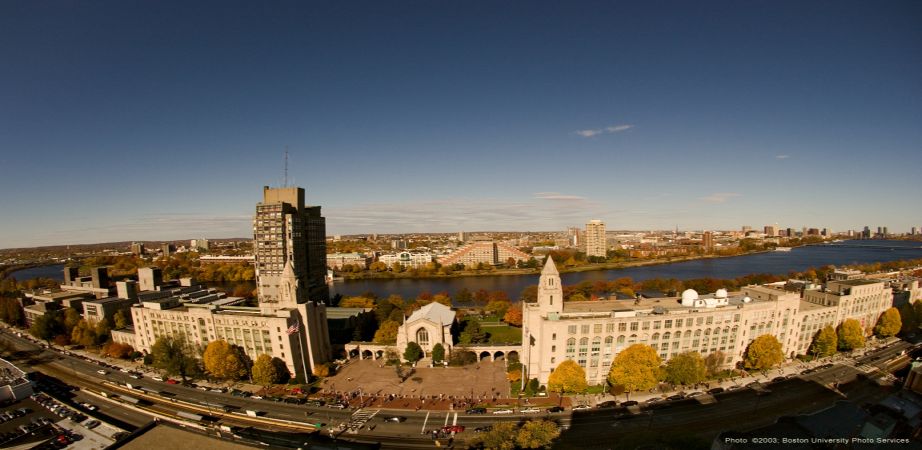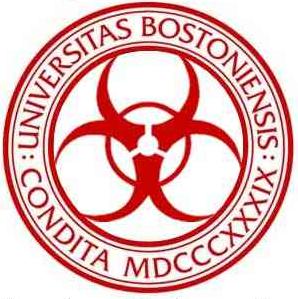Boston University
From 2007.igem.org
(→Short-Term To-Do List) |
(→Plays of the Week) |
||
| (163 intermediate revisions not shown) | |||
| Line 1: | Line 1: | ||
| - | + | [[Image:BU_banner.JPG|center]] | |
| - | + | ||
| - | |||
| + | == About Us == | ||
| - | + | Welcome to the wiki for Boston University's iGEM 2007 team! | |
| - | + | [[Image:BU_bubio.jpg|right]] | |
| - | + | ||
| - | + | ||
| - | + | ||
| - | + | ||
| - | + | ||
| - | + | ||
| - | + | ||
| - | + | ||
| - | + | ||
| - | + | ||
| - | + | ||
| - | + | ||
| - | + | ||
| - | + | ||
| - | + | ||
| - | + | ||
| - | + | ||
| - | + | ||
| - | + | ||
| - | + | ||
| - | + | ||
| - | + | ||
| - | + | ||
| - | + | ||
| - | + | ||
| - | + | ||
| - | + | ||
| - | + | ||
| - | + | ||
| - | + | ||
| - | + | ||
| - | + | ||
| - | + | ||
| - | + | ||
| - | + | ||
| - | + | ||
| - | + | ||
| - | + | ||
| - | + | ||
| - | + | ||
| - | + | ||
| - | + | ||
| - | + | ||
| - | + | ||
| - | + | ||
| - | + | ||
| - | + | ||
| - | + | ||
| - | + | ||
| - | + | ||
| - | + | ||
| - | + | Our team consists of [[Boston_University/DS | David Shi]], [[Boston_University/RA | Rahul Ahuja]], [[Boston_University/CL | Christian Ling]], and [[Boston_University/DB | Danny Bellin]], | |
| + | all soon-to-be juniors majoring in Biomedical Engineering at Boston University. | ||
| - | + | We are advised by [http://www.bu.edu/dbin/bme/faculty/?prof=tgardner Dr. Timothy Gardner], Assistant Professor of Biomedical Engineering, as well as [[Boston_University/FJ | Frank Juhn]], [[Boston_University/KL | Kevin Litcofsky]], and [[Boston_University/SS | Stephen Schneider]], students in the [http://gardnerlab.bu.edu/ Gardner Laboratory], where we work. We are grateful to our advisors for their time and support! | |
| - | + | We are also grateful to [http://www.pfizer.com Pfizer], the [http://www.bu.edu/eng Boston University College of Engineering], and the [http://www.bu.edu/eng/bme Boston University Department of Biomedical Engineering], for their generous support of our team. | |
| - | + | == Our Project== | |
| - | + | The goal of our project is to use [[Directed_Evolution | directed evolution]] to increase the current output of the electrogenic bacteria [[Shewanella_oneidensis | Shewanella oneidensis]] (affectionately referred to as Shewie in the Gardner Lab). As the name suggests, directed evolution consists of two main steps: intentionally mutating DNA and then selecting for the expression of desired traits. | |
| - | + | In the case of S. oneidensis, certain [[GTRs_in_S_oneidensis | global transcription regulators]] in its genome have been identified as being related to the metabolic processes of the bacteria. These global transcription regulators will be mutated via [[Error_prone_PCR | error-prone PCR]] and transformed into S. oneidensis in hopes of altering current output. | |
| - | + | ||
| - | + | Bacteria that express greater electrogenic capability will then be selected via [[Boston_University/Fluorescence-Activated_Cell_Sorting | flow cytometry]] or other viable selection methods. | |
| - | + | This process of directed evolution can be repeated with previously selected S. oneidensis in order to increase the level of | |
| - | + | electrogenesis even further. | |
| - | |||
| - | |||
| - | + | {| align="center" style="color:white;" border="1" | |
| + | |- | ||
| + | | bgcolor="#990000" color="white" height="30pt" align="center" | '''Our Team''' | ||
| + | | bgcolor="#990000" color="white" align="center" | '''Project Design''' | ||
| + | | bgcolor="#990000" color="white" align="center" | '''Project Results''' | ||
| + | | bgcolor="#990000" color="white" align="center" | '''Miscellany''' | ||
| + | |- style="color:#990000;" | ||
| + | | align="left" width="375pt" | | ||
| + | :'''Undergraduate Students''' | ||
| + | ::[[Boston_University/RA | Rahul Ahuja]] • [[Boston_University/DB | Daniel Bellin]] | ||
| + | ::[[Boston_University/CL | Christian Ling]] • [[Boston_University/DS | David Shi]] | ||
| + | :'''Graduate Advisors''' | ||
| + | ::[[Boston_University/Frank Juhn | Frank Juhn]] • [[Boston_University/Kevin Litcofsky | Kevin Litcofsky]] | ||
| + | ::[[Boston_University/Stephen Schneider | Stephen Schneider]] | ||
| + | :'''Principal Advisor''' | ||
| + | ::[http://www.bu.edu/dbin/bme/faculty/?prof=tgardner Dr. Timothy Gardner] | ||
| + | | align="left" width="350pt"| | ||
| + | :'''[[Boston_University/Why_Shewie | Why ''S. oneidensis''?]] ''' | ||
| + | :'''Directed Evolution''' | ||
| + | ::1. [[Boston_University/Plasmid Selection and Design | Plasmid Selection and Design]] | ||
| + | ::2. [[Boston_University/Mutation of GTFs | Mutation of GTFs]] | ||
| + | ::3. Transformation of GTFs into Shewie | ||
| + | ::::[[Boston_University/TOPO Cloning | TOPO Cloning]] • [[Boston_University/Conjugation | Conjugation]] [[Boston_University/Zymo | Zymo]] | ||
| + | ::4. Selection Methods | ||
| + | ::::[[Boston_University/Microencapsulation | Microencapsulation ]] | ||
| + | ::::[[Boston_University/Redox-sensitive fluorescent dye | Redox-sensitive fluorescent dye]] | ||
| + | ::::[[Boston_University/Fluorescence-Activated Cell Sorting | Fluorescence-Activated Cell Sorting]] | ||
| + | | align="left" width="250pt" | | ||
| + | :'''[[Boston_University/Zymo Transformation Results | Zymo Transformation]]''' | ||
| + | :'''[[Boston_University/Electroporation Results | Electroporation]]''' | ||
| + | :'''[[Boston_University/Bacterial Conjugation Results | Bacterial Conjugation]]''' | ||
| + | :'''[[Boston_University/Plasmid Customization | Plasmid Customization]]''' | ||
| + | :'''[[Boston_University/TOPO Cloning Results | TOPO Cloning]]''' | ||
| + | :'''[[Boston_University/TOPO Transformation Results | TOPO Transformation]]''' | ||
| + | :'''[[Hi-Scores and Other Greatness]]''' | ||
| + | | align="left" width="250" | | ||
| + | :'''[[Boston_University/Project Progress | Project Progress]]''' | ||
| + | :'''[[Boston_University/Protocols | Protocols]] | ||
| + | :'''[[Boston_University/Lab Photos | Lab Photos]] | ||
| + | <!--:'''[[Boston_University/Team Photos | Team Photos]]--> | ||
| + | :'''[[Boston_University/BU Photos | BU Photos]] | ||
| + | :'''[[Boston_University/Image Dump | Image Dump (56k stay away!)]] | ||
| + | |- | ||
| + | |} | ||
| - | |||
| - | + | <!-- | |
| + | [[Image:shewie.jpg]] | ||
| + | [[Image:shewie2.jpg]] | ||
| + | [[Image:pjq200.jpg]] | ||
| + | [[Image:conjugation.jpg]] | ||
| + | [[Image:fluorescent1.jpg]] | ||
| + | [[Image:fluorescent2.jpg]] | ||
| + | [[Image:fluorescent3.jpg]] | ||
| + | [[Image:fluorescent4.jpg]] | ||
| + | [[Image:facs.jpg]] | ||
| + | [[Image:topo.jpg]] | ||
| + | [[Image:topo2.jpg]] | ||
| + | [[Image:bulogo.jpg]] | ||
| + | [[Image:gardnerlogo.jpg]] | ||
| + | [[Image:bu_collegeofengineering.jpg]] | ||
| + | [[Image:gardner_logo.jpg]] | ||
| + | [[Image:bubio.jpg]] | ||
| + | !--> | ||
| - | == | + | ==Supported By== |
| + | {| align="center" style="color:white;" | ||
| + | |- | ||
| + | | width="150pt" | [[Image:BU_pfizer.gif]] | ||
| + | | width="325pt" | [[Image:bu_collegeofengineering.gif]] | ||
| + | |[[Image:Bu_Gardner_logo_small.jpg]] | ||
| + | |- | ||
| + | |} | ||
Latest revision as of 22:29, 20 October 2007
About Us
Welcome to the wiki for Boston University's iGEM 2007 team!
Our team consists of David Shi, Rahul Ahuja, Christian Ling, and Danny Bellin, all soon-to-be juniors majoring in Biomedical Engineering at Boston University.
We are advised by Dr. Timothy Gardner, Assistant Professor of Biomedical Engineering, as well as Frank Juhn, Kevin Litcofsky, and Stephen Schneider, students in the Gardner Laboratory, where we work. We are grateful to our advisors for their time and support!
We are also grateful to Pfizer, the Boston University College of Engineering, and the Boston University Department of Biomedical Engineering, for their generous support of our team.
Our Project
The goal of our project is to use directed evolution to increase the current output of the electrogenic bacteria Shewanella oneidensis (affectionately referred to as Shewie in the Gardner Lab). As the name suggests, directed evolution consists of two main steps: intentionally mutating DNA and then selecting for the expression of desired traits.
In the case of S. oneidensis, certain global transcription regulators in its genome have been identified as being related to the metabolic processes of the bacteria. These global transcription regulators will be mutated via error-prone PCR and transformed into S. oneidensis in hopes of altering current output.
Bacteria that express greater electrogenic capability will then be selected via flow cytometry or other viable selection methods.
This process of directed evolution can be repeated with previously selected S. oneidensis in order to increase the level of
electrogenesis even further.
| Our Team | Project Design | Project Results | Miscellany |
|
|
Supported By

| | 
|

